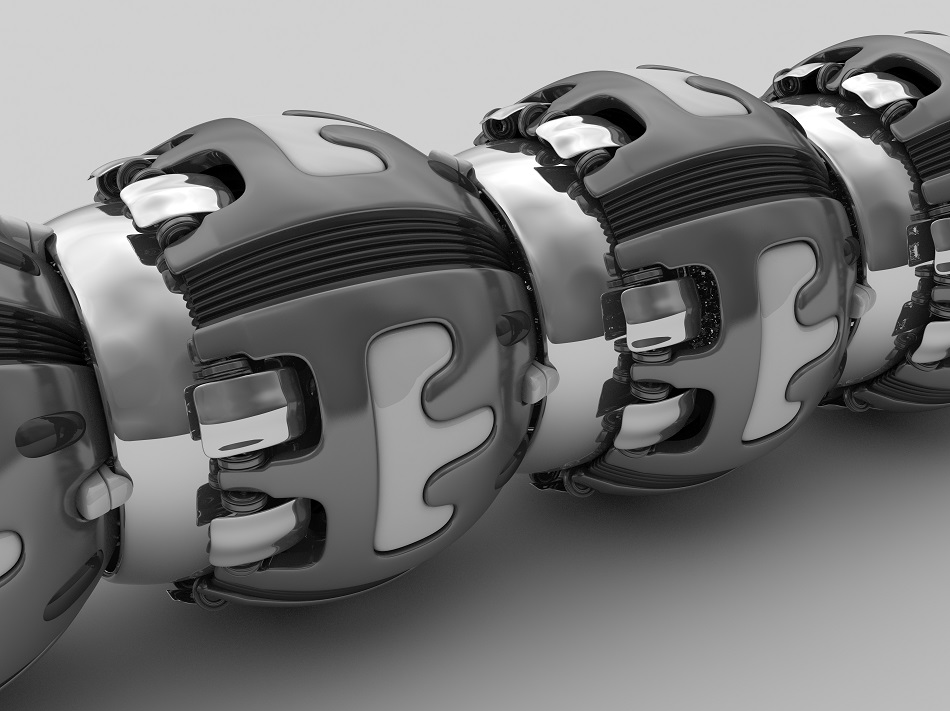 By Gaea Marelle Miranda, M.Sc.Oct 9 2014
By Gaea Marelle Miranda, M.Sc.Oct 9 2014
Image Credit: 3d_man/Shutterstock.com
Robotic movement is inspired by biological creatures and the movement is brought about by body movement rather than legs or wheels alone.
For example, crawling robots draw inspiration from snakes. These robots are capable of wriggling through constricted places and can traverse through rough terrains.
Submersible robots or shape-changing robots can move on land and in water. They can even move vertically against walls. Submersible robots are useful for investigating underwater leakages.
Basic Principle
Submersible robots can function in this way because the crawling movement is performed by a set of six thrusters which simultaneously complete a vertical and horizontal motion. The crawling robot can also change its shape up to 90° for better maneuverability through confined spaces. It attaches itself to the wall by suction.
A shape-changing robot is particularly useful for crawling through narrow spaces. The main body of the robot is made up of three joints and two compact crawlers. The posture of the robot can be varied from an open rectangle to a single line.
Researchers on submersible and shape-changing robots have focused on miniaturizing these technologies for a greater number of applications. For instance, a recent engineering project conducted by the University of Toronto produced a miniature robot that could crawl using an inchworm-like motion.
The study found that smaller robots are more efficient and relatively faster in comparison to their larger counterparts. This provides opportunities for more research and applications that can utilize crawling robot technologies.
Applications
Some of the classical applications of crawling robots include nuclear plants for checking coolant or fuel leakages, an inspection of earthquake explosions, cave-ins, hurricane-affected areas, reconnaissance operations, and complex wiring by routing electric cables and lines.
It is clear that these applications draw on larger-venue applications that are usually for industrial and operational uses.
Since the discovery of new robotic technologies in recent years, there have been efforts to make crawling robotic technologies more ‘consumer-friendly’. This implies that developments have been made to create wearable technologies (e.g. watches) that incorporate the use of crawling robots for increased efficiency.
Medicine is also seen as a focal point for smaller crawling robots. This is a way of incorporating technology into surgical applications that could not be easily addressed by traditional methods.
This article was updated on 28th February, 2020
Disclaimer: The views expressed here are those of the author expressed in their private capacity and do not necessarily represent the views of AZoM.com Limited T/A AZoNetwork the owner and operator of this website. This disclaimer forms part of the Terms and conditions of use of this website.